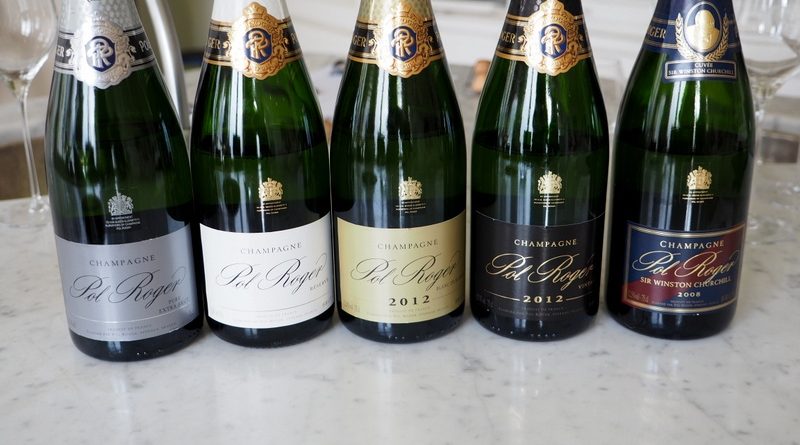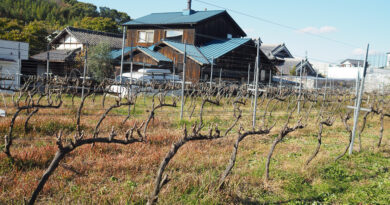In Champagne: Pol Roger
Goode and Ring continue their series on Champagne with a visit to Pol Roger in Épernay.
Family-owned Pol Roger is one of the most highly regarded Champagne houses. They aren’t huge, and a high proportion of their grape intake comes from their own vineyards: their 93 hectares of vines is sufficient for half their needs. We visited with the charismatic and ever-so-slightly flamboyant Hubert de Billy on a day in early March.
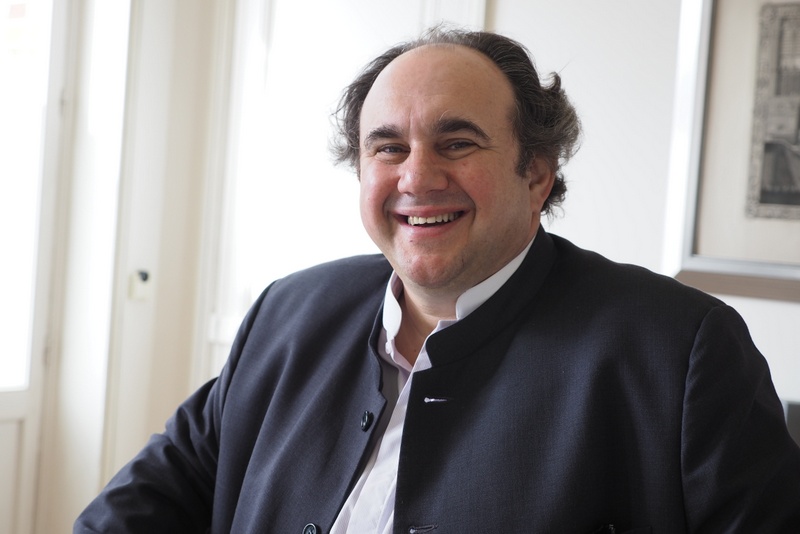
De Billy explained that they are getting ready for bottling. ‘The cuvée is done in January, blending is started in February, and bottling begins in March,’ he told us. ‘Yesterday we had a board meeting, and the Chef de Caves said the bottling will be finished by the 6th July, and the finance controller said no you have to finish by the 13th of June, because he doesn’t want to do all the paperwork in only four days! The problem is May. May in France is a cheese month: there are more bank holidays than working days. We bottle from March to the end of April. We stop in May because it is a nightmare. And we start again in June.’ Such are the troubles of running a Champagne house.
The house of Pol Roger was founded in 1849. Pol Roger was the son of a solicitor in Aÿ. He was living next to Bollinger, and he decided to produce Champagne at home to sell to other producers. ‘Over time, some of his friends said to him your wine is very good and you should sell it under your own name,’ says De Billy. ‘Aÿ was already overbooked – the streets are very small and it has always been locked between the vineyard and the canal. At the end of the 19th century, before the arrival of the train, Aÿ was the same size as Épernay.’ So Pol Roger moved to Épernay, where it is now. These days, Pol Roger has 54 employees. A century ago there were 300 employees, making much less wine. ‘We are quite large with 54,’ he adds. ‘We do the riddling by hand. So we could save 5 people, but this is not our philosophy.’
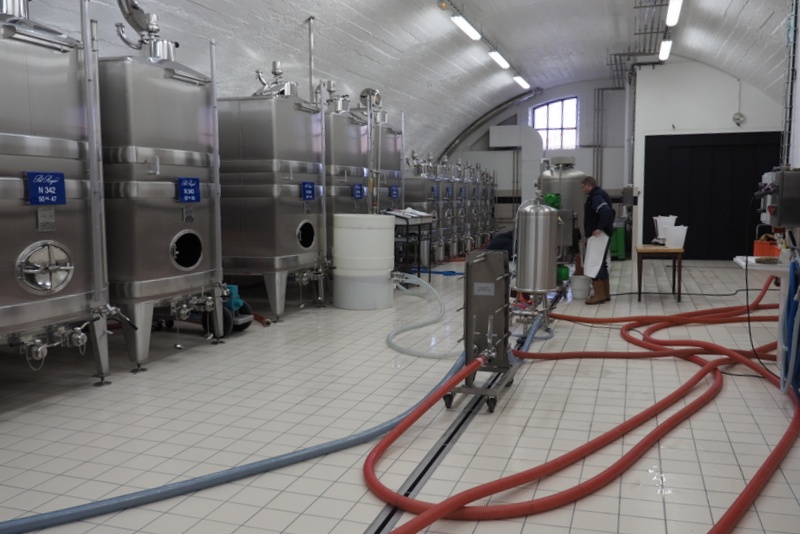
‘The philosophy of winemaking is the grape first,’ says de Billy. ‘All the technical choices are to focus on the taste of the grapes, so we have no barrels. Everything that can add a foreign taste is forbidden.’ The winery is almost entirely stainless steel, but they still have a few concrete vats which they use for the reserve wines. ‘We think that concrete is very difficult to use for the fermentation, but for storage it is perfect.’ They last bought a barrel in 1975, and from 2012 onwards all fermentation has been in stainless steel. ‘When it comes to vat size, small is not always beautiful,’ says De Billy. He thinks 10 000-15 000 litres is the best size, but they do have to use some smaller vats of 2, 3, 5 and 7000 litres.
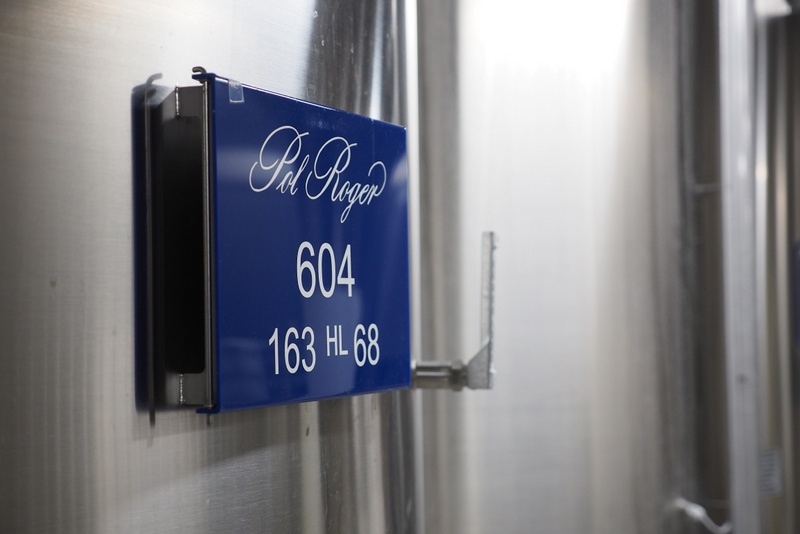
One feature of their winemaking that is unusual is a second decating process. After pressing in the press house (these are scattered around the vineyards) the juice is settled to let all the gunk fall to the bottom, then removed from these juice lees. This juice goes to the winery. ‘We do a second decanting at 7 C in vats at the winery because it has a better cooling system,’ says De Billy. The alcoholic fermentation is completed, and then all the wines go through malolactic fermentation. ‘One philosophy of Pol Roger is that everything regarding the wine has to be slow,’ says De Billy. ‘We have slow fermentation, because we cool it down, we take more time because we do the second decanting, we do longer ageing than most of our colleagues. Everything that is to do with the wine has to be slow.’
De Billy says that choosing the reserve wine is one of the key tasks just after vintage. ‘When I started in the company in 1988, I did the mistake that all the newcomers make,’ he shared. ‘I said, this wine is not so good, so let’s use it as a reserve. When you start you think that you need to put the best wine in your cuvée, and what you don’t use you keep. My uncle told me that it should be the opposite. Because the reserve is used to make the next wine better. Bad wine from the beginning will never give good wine. Most of the reserve wine is selected at the beginning.’
‘First I do Churchill and Blanc de Blancs. They are the two smallest productions, and they are the two iconic wines of Pol Roger. Then I select the reserve wine. Then I do vintage and non-vintage at the end.’
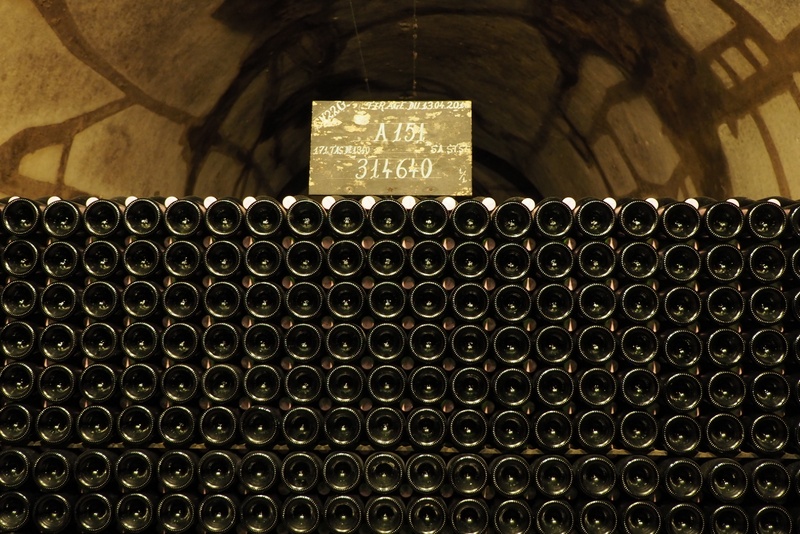
‘We classify the wines. We taste during one month, beginning at the start of December. We have 3 oenologues in the company. We taste all the vats together. Some vats go to the distillery. After, we decide the vats which are obviously for the non-vintage. By mid January we have tasted everything. I make a decision, and give the proposal to the rest of the family. It is like the election of the Pope: we don’t leave the room until a decision is made. We start at 9 am and don’t leave until we’ve decided.’
Until the 1970s Pol didn’t source any wine from the Aube. ‘This was for taste reasons, not quality (I’m going to be politically correct),’ says De Billy. ‘Nowadays, we’d like to have some. We have found 3 hectares in Les Riceys and we are very happy, because now the quality of Aube is much higher, and it was a taste that was missing in our palate. It’s a taste we’d like to increase a little bit.’
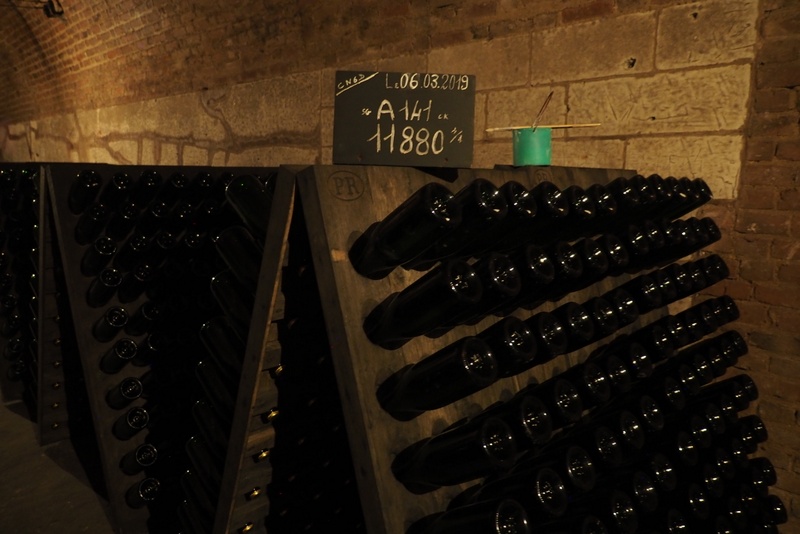
One of the most unusual features about Pol Roger is that they do all – or almost all – the riddling by hand. They have 7 km of cellars, with the lowest at 35 m below the surface where this takes place. ‘We are the last to do mostly all our riddling by hand,’ says De Billy. ‘I must be honest. We are good French and so we take an August holiday so there is a small portion, roughly 5% which is machine riddled, so that we can be sure that in September we can start again.’ They do triage in halfs, bottles, magnums and jeroboams. ‘It takes a month to riddle by hand,’ he says. ‘There are four riddlers and each move 50 000 bottles a day. Each riddler has roughly 200 000 bottles under his own authority. The riddler is the only worker who is his own boss. We are asking him for a perfect wine a month after. We don’t ask him how he does it. The sediment moves according to the atmospheric pressure, so in Spring and Fall it is a bit more difficult than in winter and summer.’ Normally people fill Jeroboams afterwards, but Pol Roger riddle quite a lot of them: around 2000. ‘It is starting to be quite popular,’ says De Billy.
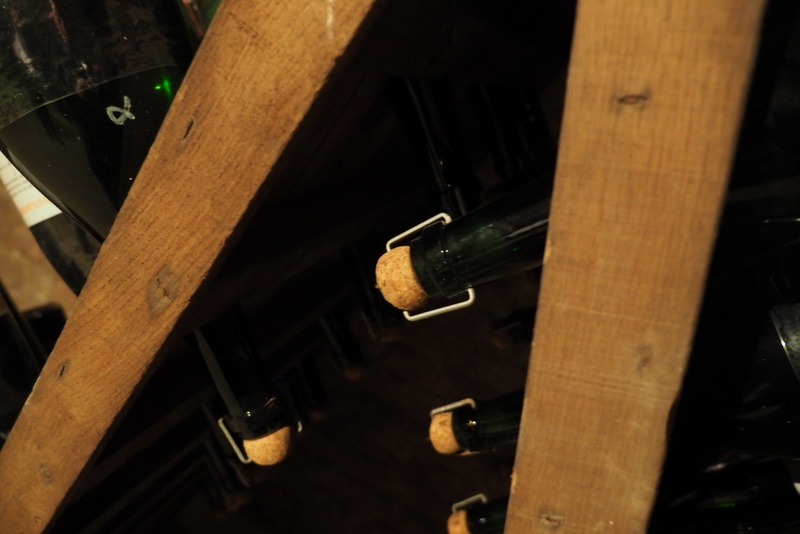
‘Cork is still a problem,’ he says. ‘The problem is the Mytik is not perfect, and real cork is not perfect. I am going to meet Monsieur Amorim in July.’
Billy says that aperitif champagne is a new thing. ‘Before the war, champagne was only before the meal and dessert. When people started to move to aperitif champagne, my father didn’t want to change things in the cellars, so he changed the cuvee very slowly and created the Blanc de Blancs to answer this new demand. It was their prestige cuvée before they started Winston Churchill. They do only recent disgorgement. Ageing is minimum of six years, and if they can wait another year they do.
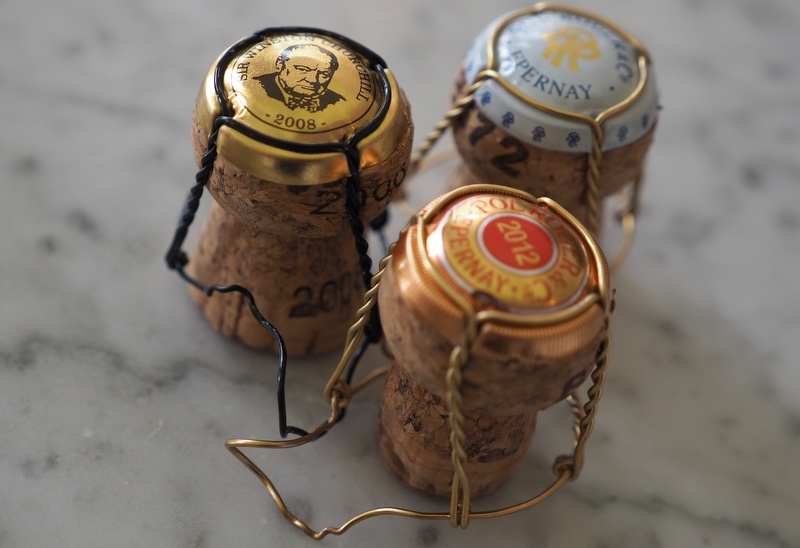
They don’t put information on the bottle about the blend, the bottling date and the disgorgement date and dosage. ‘Our philosophy is don’t give details to someone who is not able to understand,’ says De Billy, pointing out that the information is on the case, but not the bottle. If the customer asks the question, the retailer can give the answer. They don’t hide anything. ‘We want to be able to give the details to someone who is able to understand it.’
There’s a family resemblance to these wines. They are quite pure and have a nice linear character, but there’s generosity too. The non-vintage is four years on lees, and all the NVs are one-third of each of the main grape varieties.
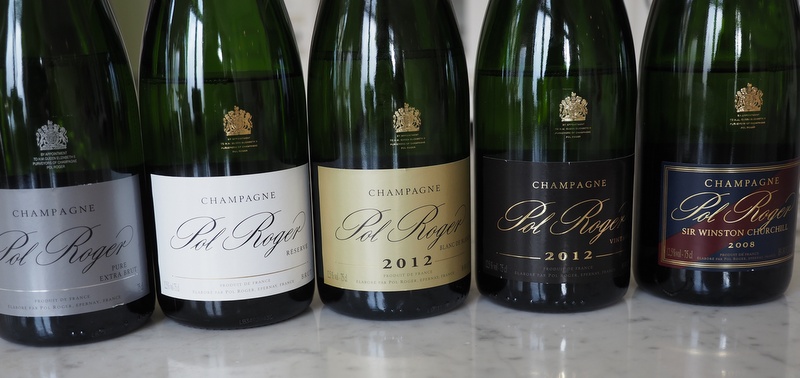
THE WINES
Champagne Pol Roger Pure Extra Brut NV France
Non-dosé. 2014 base vintage, three years of ageing on lees. Crus with lower acidity are selected. Small production, 50-70 000 bottles. Has to be sharp, straight but drinkable. This is linear with keen acidity, but also nice generous pear and peach fruit alongside a citrus core. Nice precision here with some toast and spice richness. 91/100 (JG)
Their non-dosé is a smaller production, approximately 50,000 bottles / year. Based on the 2014, this has 3 years of aging (their NV Brut is 4 years). Crus were selected for lower acidity here. Bright lemon, chalk sit tight on the palate, shaped by a very narrow frame. Lean and snappy to the bright finish. 90/100 (TR)
Champagne Pol Roger Brut Reserve NV France
25-30% Reserve wines, usually from the three preceding vintages. Fine and quite linear with nice citrus fruit and subtle toast and white peach. There’s a nice tension between the richer toasty, hazelnut characters, with bright citrus and good acidity and freshness. Finishes with a touch of sweetness. Quite crystalline. 92/100 (JG)
Equal parts Pinot Noir, Pinot Meunier and Chardonnay, this was drawn from 30 crus across the Montagne de Reims, Vallée de la Marne, & Côte des Blancs. After a stainless ferment and full MLF, this ages four years on lees and includes 25 percent reserve wines from the 3 previous vintages. Creamy, lees led and brioche dominant, with green apple, toasty notes, high acid (easily enough to counter the 9 g/l dosage). Lovely meringue / marshmallow notes on the firm finish. A well-balanced classic. 92/100 (TR)
Champagne Pol Roger Blanc de Blancs 2012 France
Made only from Grand Cru vineyards, this wine was created by Hubert de Billy’s father in the 1950s to answer the demand for aperitif Champagne. It has six years minimum ageing, but in most cases is disgorged as late as possible, with a dosage of 8 g/litre. Refined subtly floral citrus fruit nose with some nuts and honeysuckle. Lovely precision on the palate with fine, delicate citrus fruit. Very fine toasty notes with some peachy richness, but the dominant theme is pure citrus notes. Incredible delicacy and precision, with just a touch of sweetness on the finish. 95/100 (JG)
Finesse and energy abound in this brisk, bright Blanc de Blancs. Entirely Grand Cru fruit (no Oger in the mix), this cuvée was created by Hubert de Billy’s father in the 1950’s to answer demand for aperitif champagne. This spends a minimum of 6 years on the lees before disgorging at 8g/L. Focused and fine lemon and toast dances on the palate with nimble acidity, threaded with find chalky texture. Precise and age worthy, and a prestige champagne worthy of the name. 94/100 (TR)
Champagne Pol Roger Vintage 2012 France
60% Pinot Noir, 40% Chardonnay, premier and grand cru. Fine, toasty nose with some mandarin, cherry and citrus. The palate has some Pinot roundness with bright lemon and cherry fruit and some more mandarin character. Has some delicacy and precision, but also some depth, but this is always fresh and detailed and doesn’t get at all heavy. 93/100 (JG)
Unreleased at time of tasting, but was to be released late 2019. Deeper in hue, and entirely 1er and GC fruit, this cepage is 60% Pinot Noir, 40% Chardonnay. Deeper lemon hue, with bright lemon, toast, spicy cherry and scented raspberry wrapping around a round, creamy core, with some creamed corn on the finish. Quite proper and structured. 92/100 (TR)
Champagne Pol Roger Cuvée Sir Winston Churchill 2008 France
10 years minimum on lees. ‘The difficulty with Churchill is to play with the stock and allocation so we are not pushed by the market to go faster,’ says Hubert de Billy. They do two rounds of allocation so they can adapt. Mostly Pinot Noir with some Chardonnay, adapted to the vintage. If the Pinot is more powerful, the amount of Chardonnay is adjusted. Between 70 and 80% Pinot Noir. Just Grand Cru. First vintage 1975, only in magnum and first sold in 1985. Fine, refined, slightly developed nose with toast, hazelnuts and citrus fruit. The palate has lovely precision allied to power, with concentrated citrus, white peach and apple notes, showing some structure and weight, and some cherry and plum on the finish. It’s in a nice place, with some richer developed notes allied to freshness and detail. A very structural Champagne that’s quite vinous. 95/100 (JG)
This classic prestige champagne is predominantly Pinot Noir (70-80%), with the remainder Chardonnay, and entirely Grand Cru fruit. Since the first vintage in 1975, this cuvée has seen a minimum 10 years aging before release. Perfumed nose, teeming with red fruit, lemon, and a touch of creamed corn, which all carry through to the structural, firm, weighted, but still quite fresh palate. Though the blend varies with the vintage, it was designed to be what Sir Winston Churchill would likely prefer to drink now, as he expressed a marked preference for older wines. As Gerard Basset coined it, they wanted to create Burgundy with bubbles. 93/100 (TR)
Champagne Pol Roger Rosé 2009 France
Created by Hubert’s father to satisfy demand in Central America, which at the time was a strong market. Same blend as vintage with 15% red wine, will use a number of different suppliers for this. A beautiful pink/orange colour, this is a gastronomic rosé with sweet cherries, rosehips and some orange peel and lemon citrus characters. Lovely Campari notes, too. Such detail and precision here with a touch of sweetness on the finish. Very stylish, with some structure on the finish. 93/100 (JG)
Pouring a deeper orange salmon hue, the rosé is always only a single vintage at Pol Roger. The cuvée was created to suit the Central American market by Hubert de Billy’s father, and in contrast to his father, who was entirely against rosé champagne. Quite fruity up front, with raspberry, cherry, red apple leading the and brisk on the palate, to an astringent and lightly bitter cherry finish. This sees 15% red wine and has a minimum 6 years aging before an 8 g/L dosage. 91/100 (TR)
Find these wines with wine-searcher.com
See also:

